Review by Pete Vack
If by any chance you have not yet been persuaded to purchase Dasse’s latest work, then perhaps a look at Volume 2 might just do it. Allow us to interject a purely subjective note: Reading – studying, if you will – these two volumes is pure joy for an Alfisti.
V1 left off in the middle of a discussion of the Last of the Red Hot Alfas, the 6C 3000 CM, and follows through on the Peron car that crashed at the Pittsburgh Vintage Grand Prix and was then rebodied as a Colli coupe by Henry Wessells, the Bonnier Zagato spider and dramatic photos if the Pininfarina showcars, all presumably built on the same chassis, reportedly 1361.00128. Again, many excellent images, many of which we’ve never seen before.
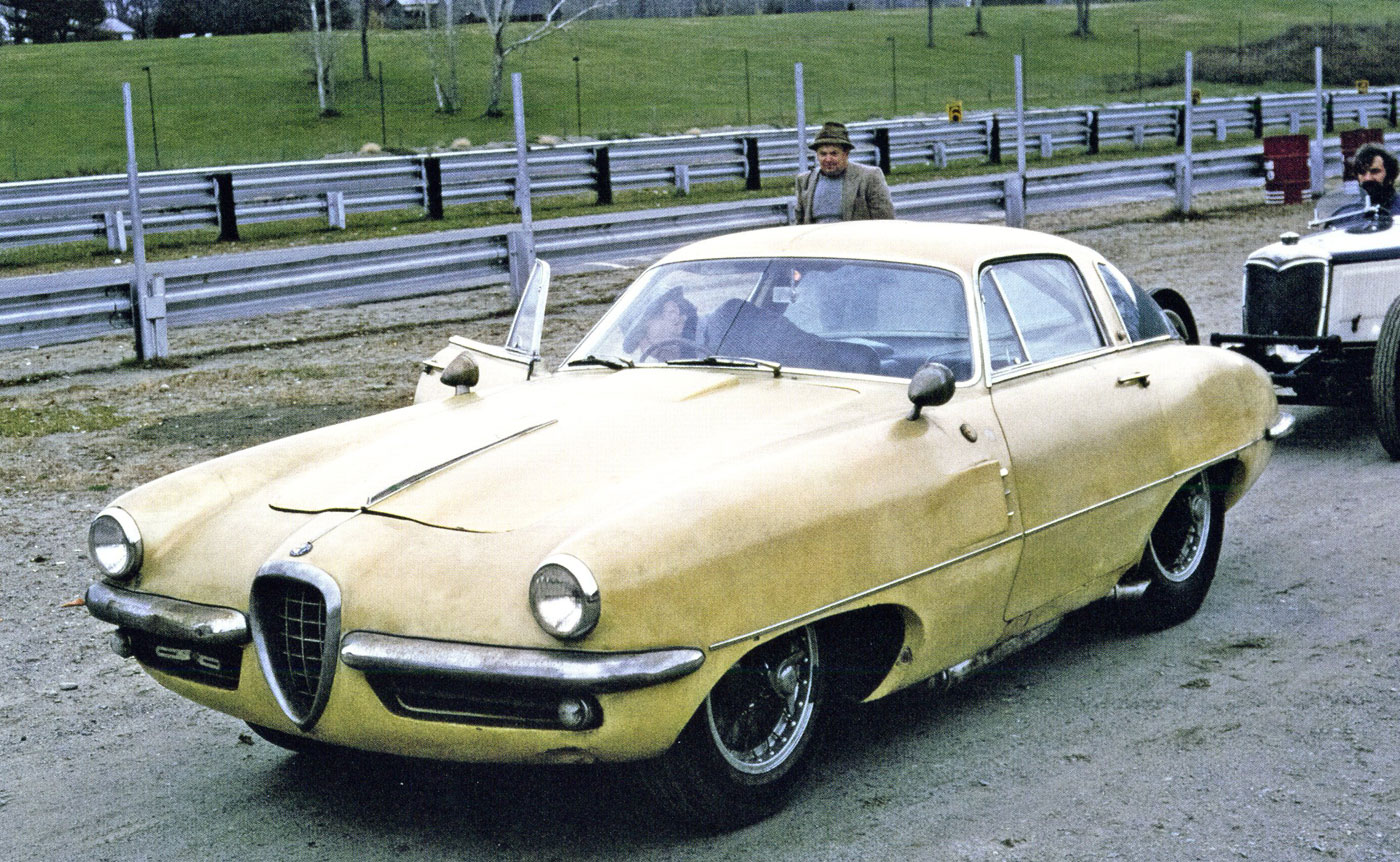
AR 3000CM 00126 as bodied by Boano. Author Patrick Dasse found this photo of the car sometime after it arrived in the U.S. Perhaps readers can identify the time and place.
Then Volume 2 gets even better. There is a prototype with no known chassis number and no photos exist aside from crash shots depicting what is left of a Touring spider. The car no longer exists. Fusi features a drawing of what it might have looked like but no photo. It was named the 3000 PR, which meant ‘reduced wheelbase.’
Turn the page. You may have seen photos of what Dasse refers to as the ‘1900 Sport’. Others, including Fusi, called it a ‘2000 Sportiva Prototype.’ This was an attempt to create a race car using the four cylinder 1900 engine. It was an enchanting little barchetta by Scaglione via Bertone and is still in the Alfa Museum.
But there was another chassis, an even more fetching Scaglione coupe. No one knows what happened to it. It was last photographed in 1956 at the factory next to the Giulietta Spider Monoposto Prototype.
Apparently, whatever it was called, that was the prototype to the stunning Sportiva, a car designed specifically as a Grand Touring car per FIA specs, with a complete de Dion rear end that would help Alfa engineers design the Alfetta series years later. This is a familiar car, but did you know that there were two, a red one and a silver one?
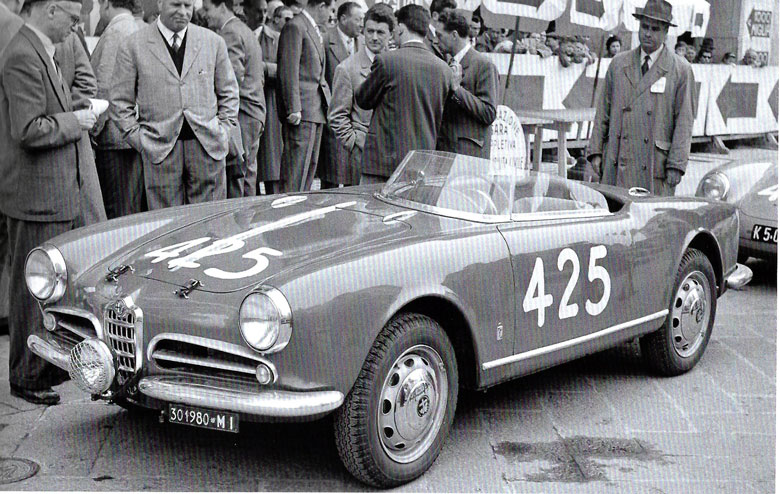
A particularly nice shot of the Giulietta Spider 750G Monoposto in Brescia for the 1956 Mille Miglia.
And next is one that you could make yourself. Just find a 1956 750G series Giulietta Spider and follow the instructions and photos as VIN AR 1495 00051 is studied in detail. Unfortunately most of the photos are of the accident that destroyed the famous Monoposto Spider during the 1956 Mille Miglia, Sanesi driving.
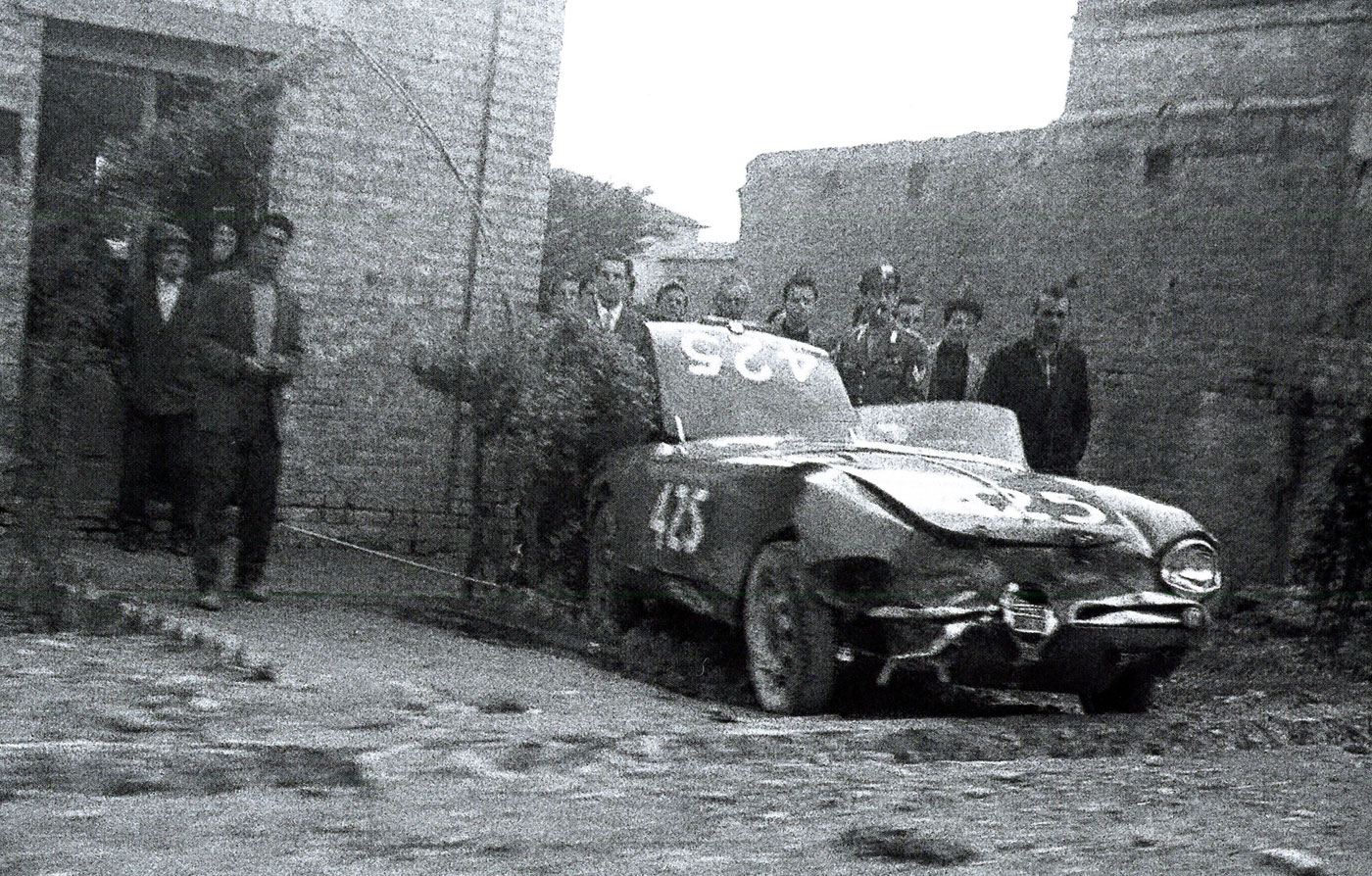
Consalvo Sanesi went off the road with the 750G Monoposto during the 1956 Mille Miglia. This grainy shot was taken by Louis Klemantaski, as the Ferrari he was co-piloting with Peter Collins went by rather quickly.
The Abarth Alfas
In 1955, Abarth first constructed a lightweight platform chassis, had Boano do the design, and reportedly used a 1500cc Giulietta engine. Apparently this was all put together at Alfa rather than Abarth, who as you recall was located in Turin. Two were built and two still exist at the Alfa Museum. They are referred to as the 750 Competiziones. No, we didn’t know there were two.
Not a prototype but a record car, the Alfa Abarth 1100 was also an Abarth construct. The Pininfarina designed Alfa Abarth was almost identical to Abarth’s 750cc Fiat powered version and both were displayed at the Geneva show in March of 1957. It did set a number of records at Monza before being destroyed in a crash. A second car was produced and shown at Turin that same year but little else is known about it.
Next was the tiny, attractive coupe, the Alfa Abarth 1000 that should have been put into production immediately as it would have been a wonderful car to own and drive. It first appeared at the 1958 Turin show with a one liter Alfa engine, and then disappeared. Want one? Too bad. But Dasse has discovered that there were several tubular chassis built at Abarth. So what happened to it, or them?
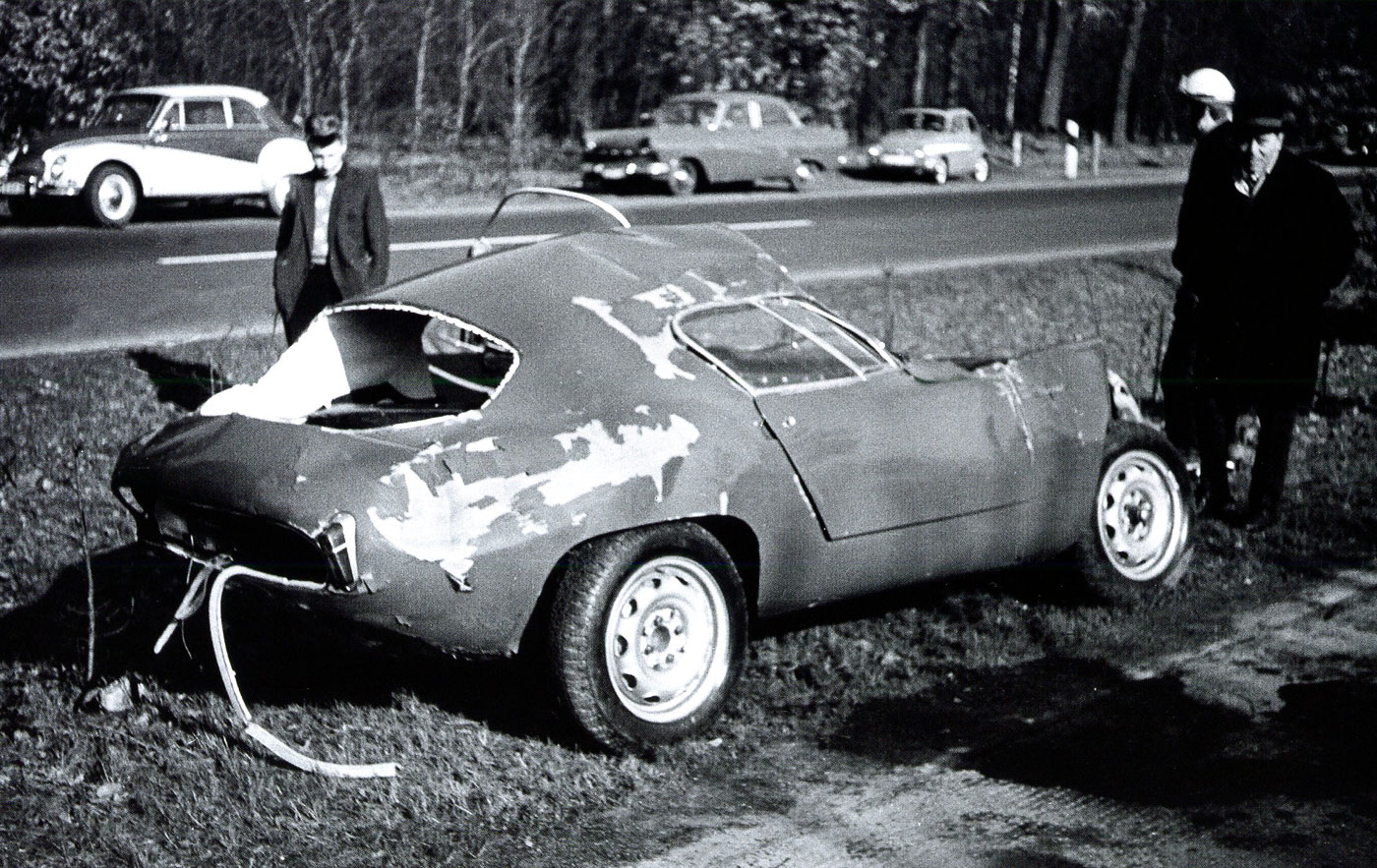
This may or may not be the Turin show car, seen here after a crash at Avus after being purchased by Han Wax, a German Alfa dealer. Or, it may be a second Abarth Alfa prototype. Note the differences in the rear end treatment.
Well, maybe, just maybe, that gorgeous little coupe ended up alongside a German highway, bent beyond recognition. Dasse doesn’t know for sure, but if it’s not a modification of the original Turin show car, then it is a second version. After the accident it apparently went to where it got to be encased in fiberglass. Yes, many photos here. More photos than hard facts.
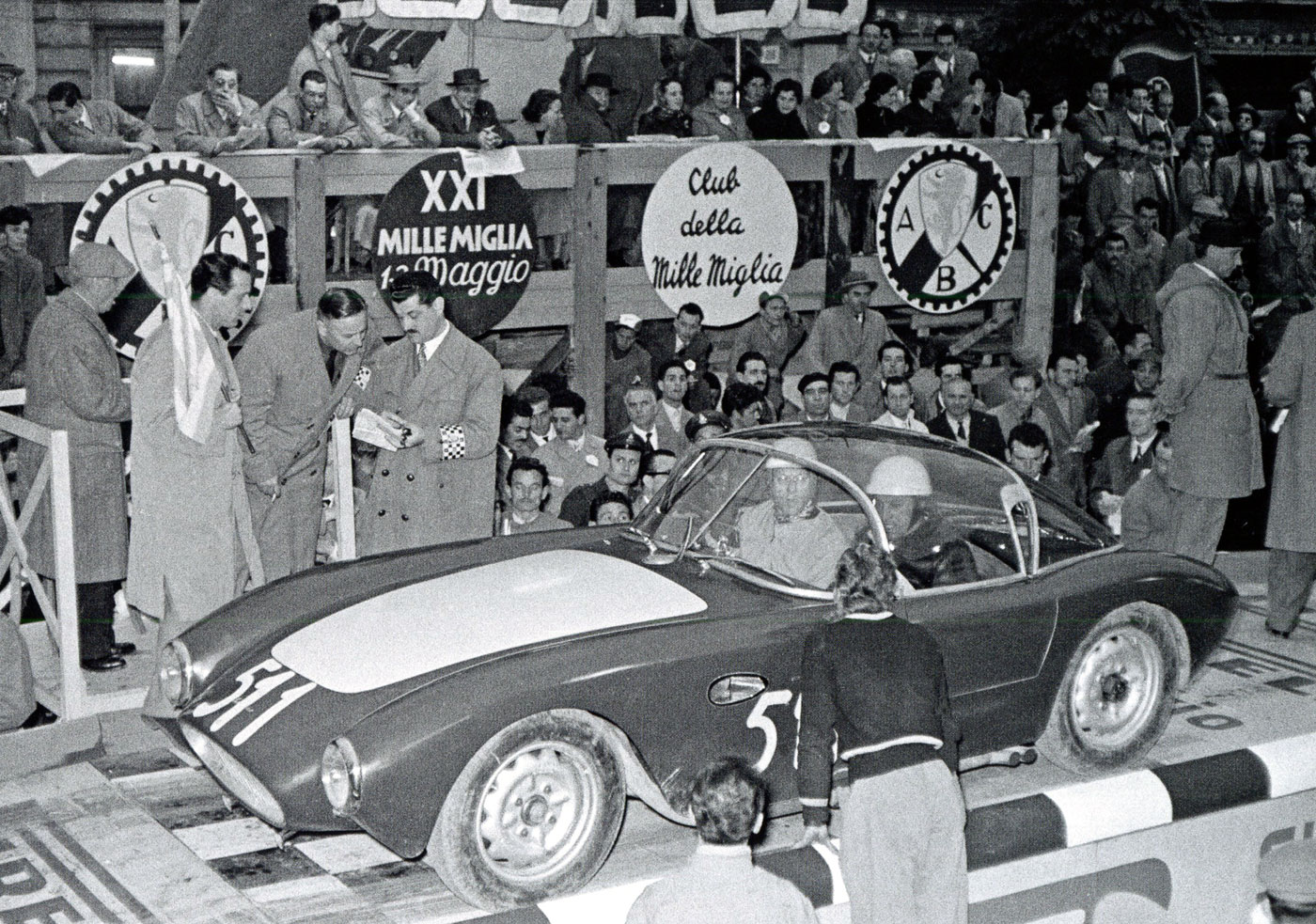
A Conrero Alfa at the 1954 Mille Miglia. Not an Alfa Romeo prototype but one of the interesting sports racers included in the Appendix.
Alfa’s involvement with the earlier racing prototypes is clear, but by the late 1950s Portello engaged outside firms such as Abarth and possibly Conrero to create sports prototypes. It was a fine between being a true factory backed prototype and an independent effort. The Abarth Alfa connection was severed when Abarth signed on with Fiat. Alfa soon found itself creating the TZ along with Zagato. Dasse limits his book to 1962 with the onset of the Giulia, and sees the last of the Alfa Prototipi as the Giulietta GT which soon morphed into the TZ1 with the Giulia 1600 engine.
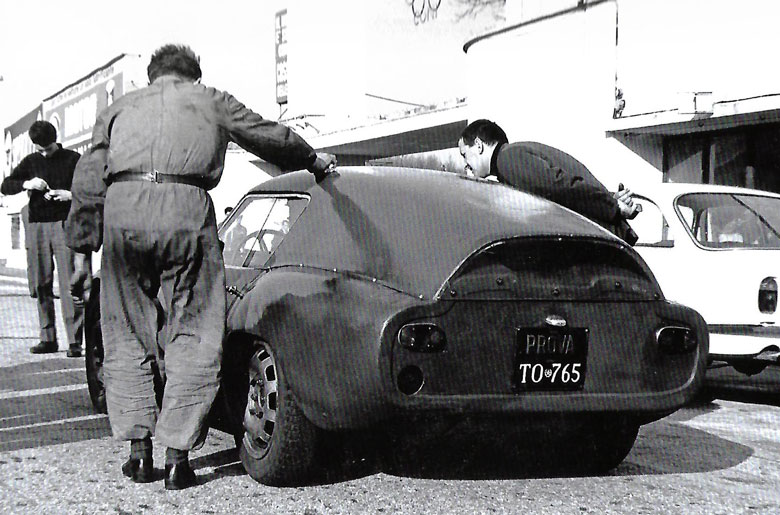
Back to the drawing boards for Alfa. In conjunction with Zagato, the 1300 Giulietta GT is being tested at Monza in early 1962. Further development replaced the 1300 with the new 1600.
With a hearty thanks to those at the Museum who have supported his efforts, Dasse includes an Appendix with a tour and short history of the Alfa Romeo Museum, enlightening us further. Grouped in the Appendix are the B.A.T. projects, which were not officially supported by Alfa, and a look at a few other Alfa prototypes that aren’t Alfas but interesting, nonetheless.
We’ll say it one more time. If you haven’t clicked on ORDER HERE, get on it.
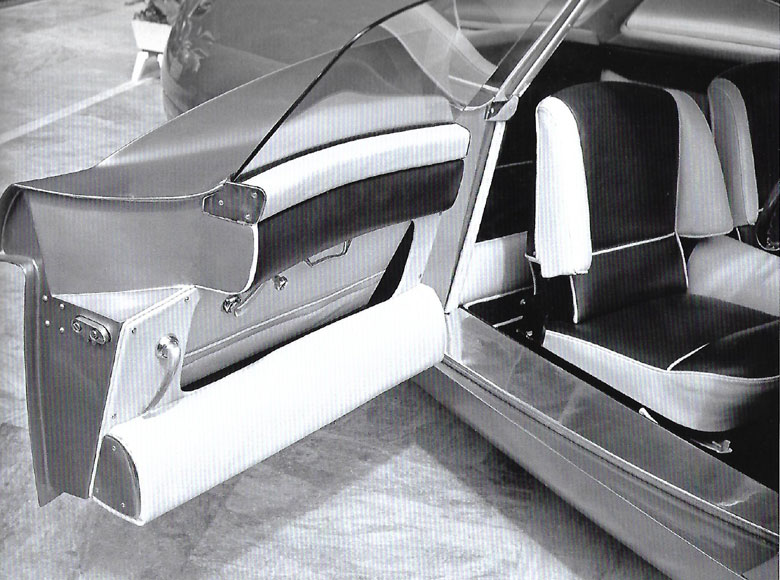
Not an Alfa project but Dasse includes many photos of the three B.A.T.s. This is the interior of the B.A.T. 7, as wild inside as out.
Alfa Romeo Prototipi 1948–1962
The book consists of two volumes,
totaling 600 pages:
Alfa Romeo Prototipi 1948–1962 – Volume 1“,
300 pages, 311 black and white photos and 28 colour photos
Alfa Romeo Prototipi 1948–1962 – Volume 2“,
300 pages, 302 black and white photos und 49 colour photos
Size: 29 x 24,8 cm
Weight: 3,2 kg
Language: English – German
Author: Patrick Dasse
ISBN 978-3-87166-094-8
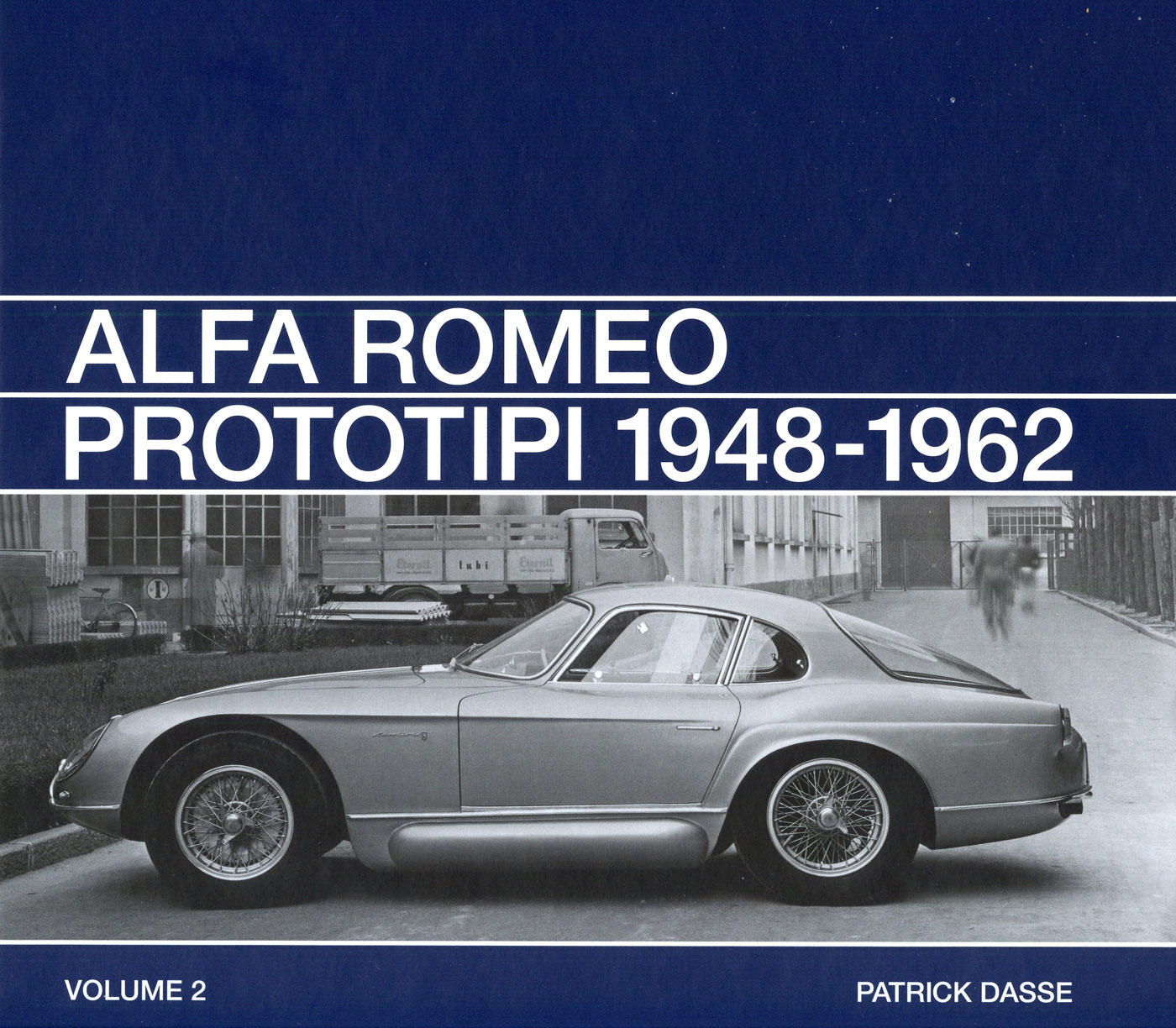
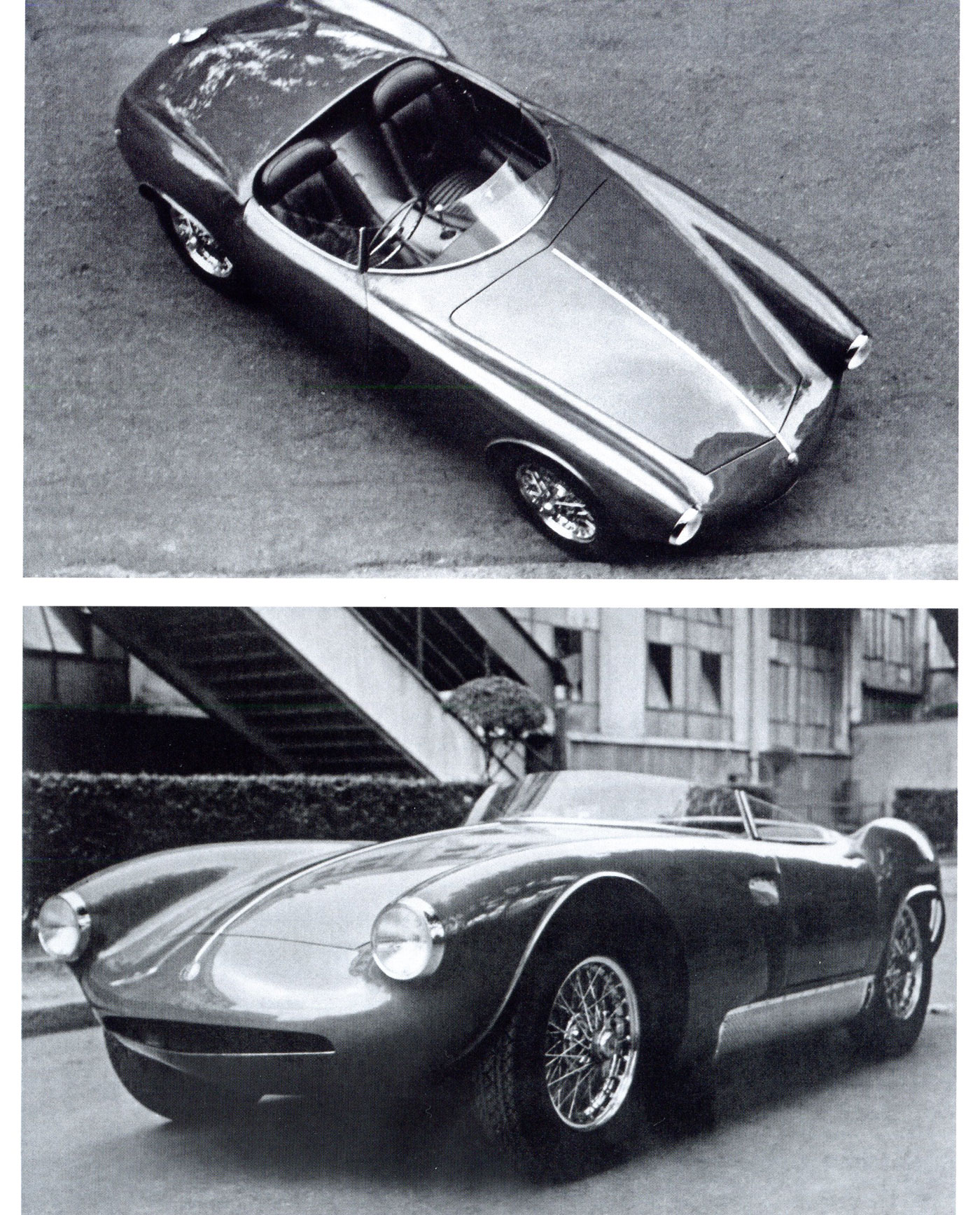
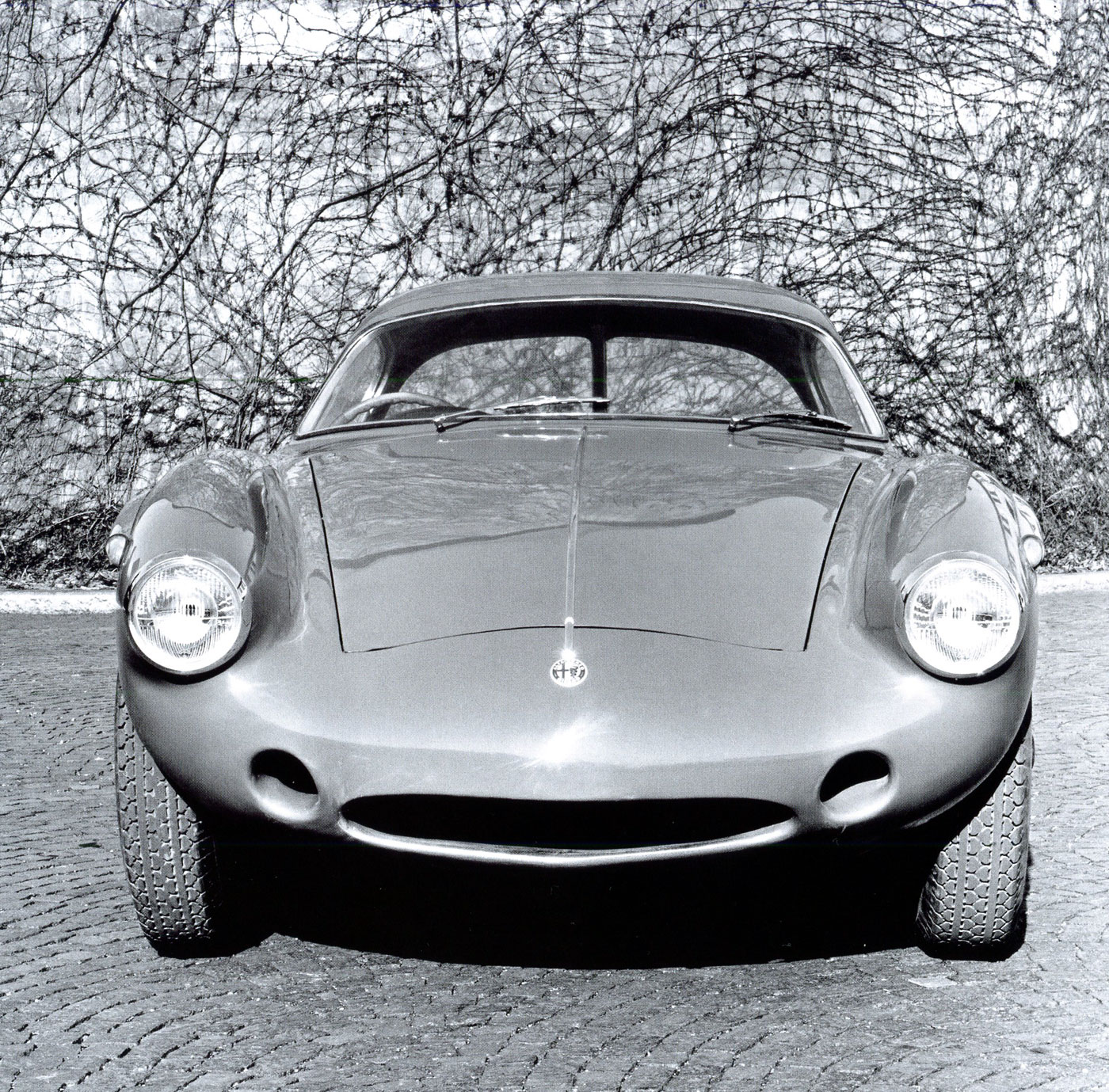
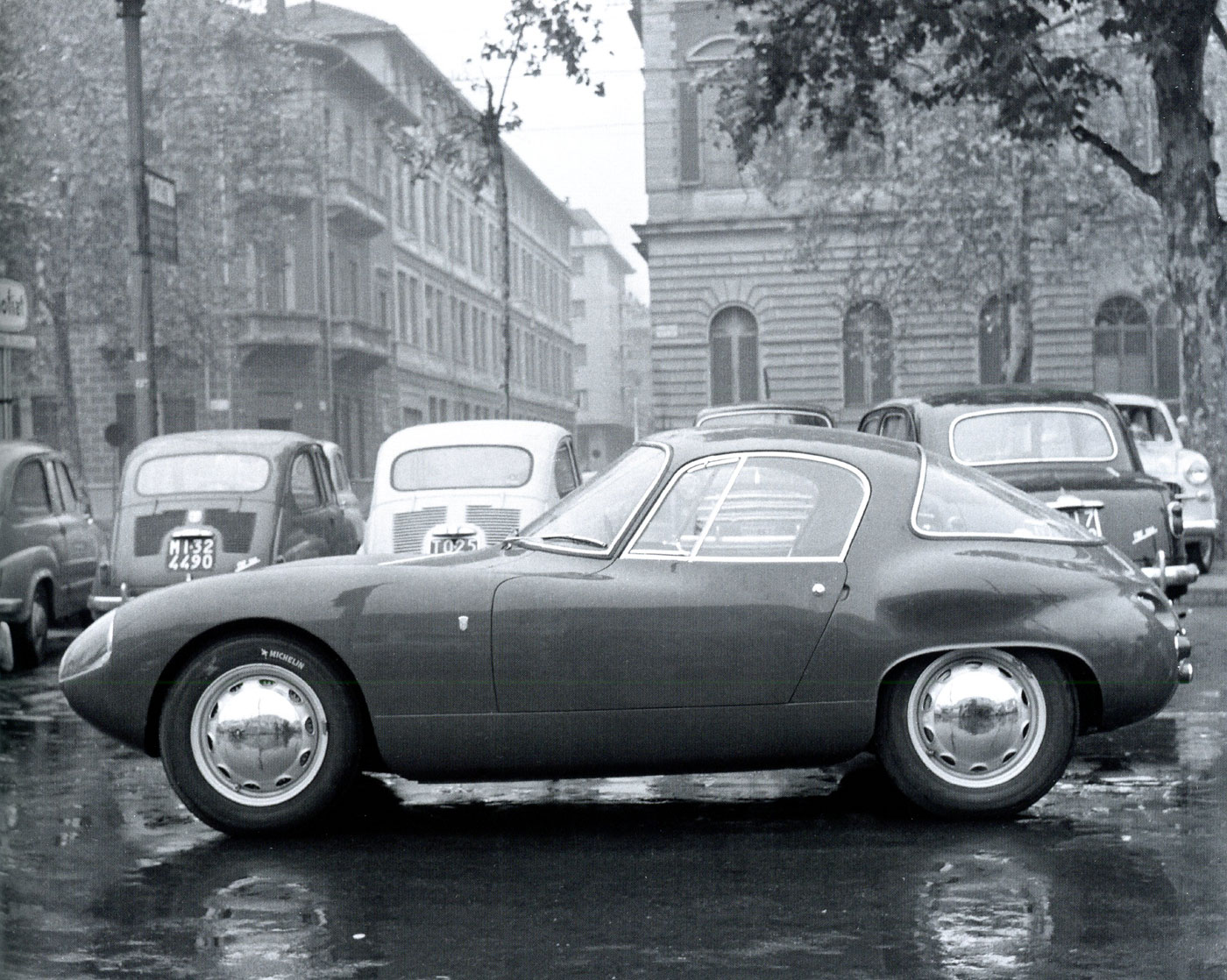
>>It was named the 3000 PR, which meant ‘reduced wheelbase.’
Might PR in this instance be shorthand for PROVA, or test car as it appears on Italian license plates?
PR probably stands for Passo Ridotto
That is correct..
Pete
I spoke to Consalvo Sanesi on the phone some years ago when writing about the Disco Volante related cars. He crashed the 3000PR testing at Monza and said to me “it was throwed at the garbage” but later there were photos of the wreckage on a truck and it seems it came to the UK and was rebuilt by Chris Mann who I believe still has it. Would like to hear any updates on this story